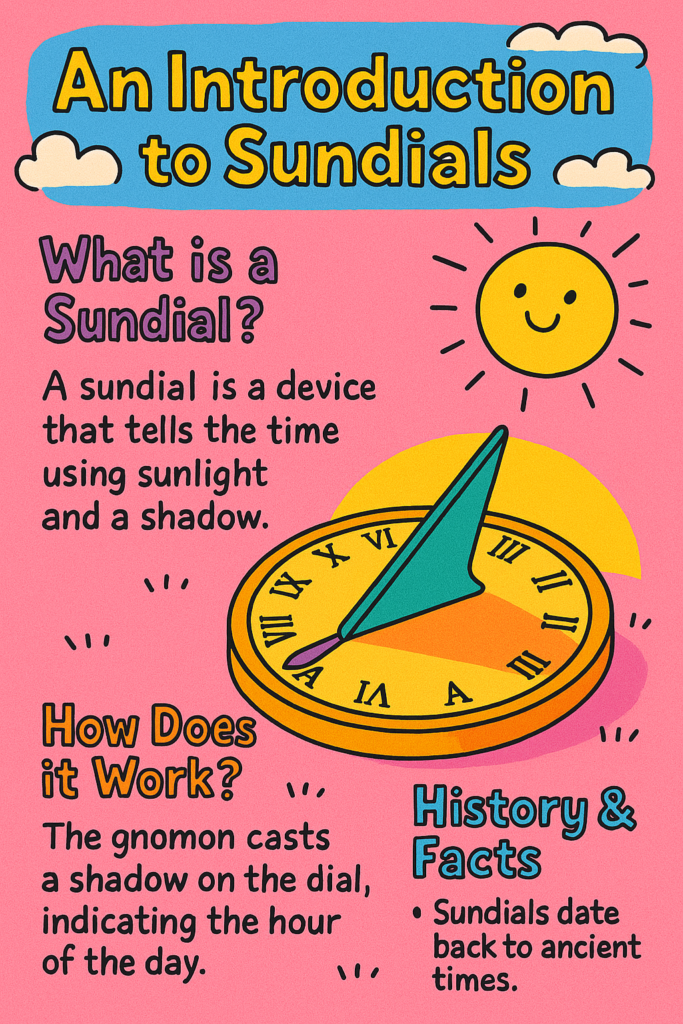Imagine this: You’re in your garden, sipping lemonade, and instead of glancing at your phone or watch, you look at a shadow dancing across a cool little stone circle in the grass. It’s not magic—it’s a sundial!
Long before we had digital watches and smartphones to tell us the time, people used something much simpler and a lot cooler: sundials. These ancient tools used the sun to keep track of the hours—and they did it with just a shadow! Let’s explore how sundials work, their history, and why they’re still fascinating today.

What is a Sundial?
A sundial is a device used in ancient times to tells the time without using machine or any kind of batteries. They just needed one thing, the Sun. Basically device tracks the position of the Sun in the sky by casting a shadow on a flat surface marked with the hours of the day. As the sun moves across the sky throughout the day, the shadow moves too.
How Does it Work?
At the centre plate of a sundial is the gnomon that is aligned with the Earth’s axis and points toward true north. The gnomon sticks up at centre and casts a shadow onto the dial, which is marked with hour lines. Wherever the shadow falls, that’s your solar time.
A Brief History of Sundials
Sundials go back over 3,500 years. The ancient Egyptians used obelisks as massive time indicators. The Greeks and Romans improved on the design, making portable sundials that could travel across the empire. In fact, sundials were the most accurate timekeeping devices for centuries—until mechanical clocks came around in the 14th century.
Sundials Around the World
- Ancient China used sundials as part of their astronomical observations.
- Islamic scholars in the Middle Ages used sundials to determine prayer times.
- Incas and Mayans aligned their temples with the sun to track time and seasons.
- Sundials weren’t just clocks—they were scientific tools, spiritual symbols, and sometimes even public art.
Why Sundials are Still Cool Today
- They’re Sustainable: No electricity needed!
- They’re Educational: Great for teaching kids about Earth’s rotation, geometry, and history.
- They’re Beautiful: Many are stunning pieces of garden art or architecture.
- They’re a Great Conversation Starter: Imagine telling your guests, “Oh, I check the time by my sundial.”
Make Your Own!
Want to make a simple sundial at home?
All you need is:
1. A stick (or pencil)
2. A paper plate or piece of cardboard
3. A sunny spot
Stick the pencil vertically in the center of the plate, mark the shadow of pencil tip every hour, and label it. You’ve just built your own DIY time machine!
Final Thoughts
Sundials may be an ancient concept, but they’re not outdated. They remind us that even the high technology world we live in today still works on the rhythm of the sun. Next time you see one in a garden or park, give it a closer look—it’s telling time the old-fashioned (and very cool) way.
Leave a Reply